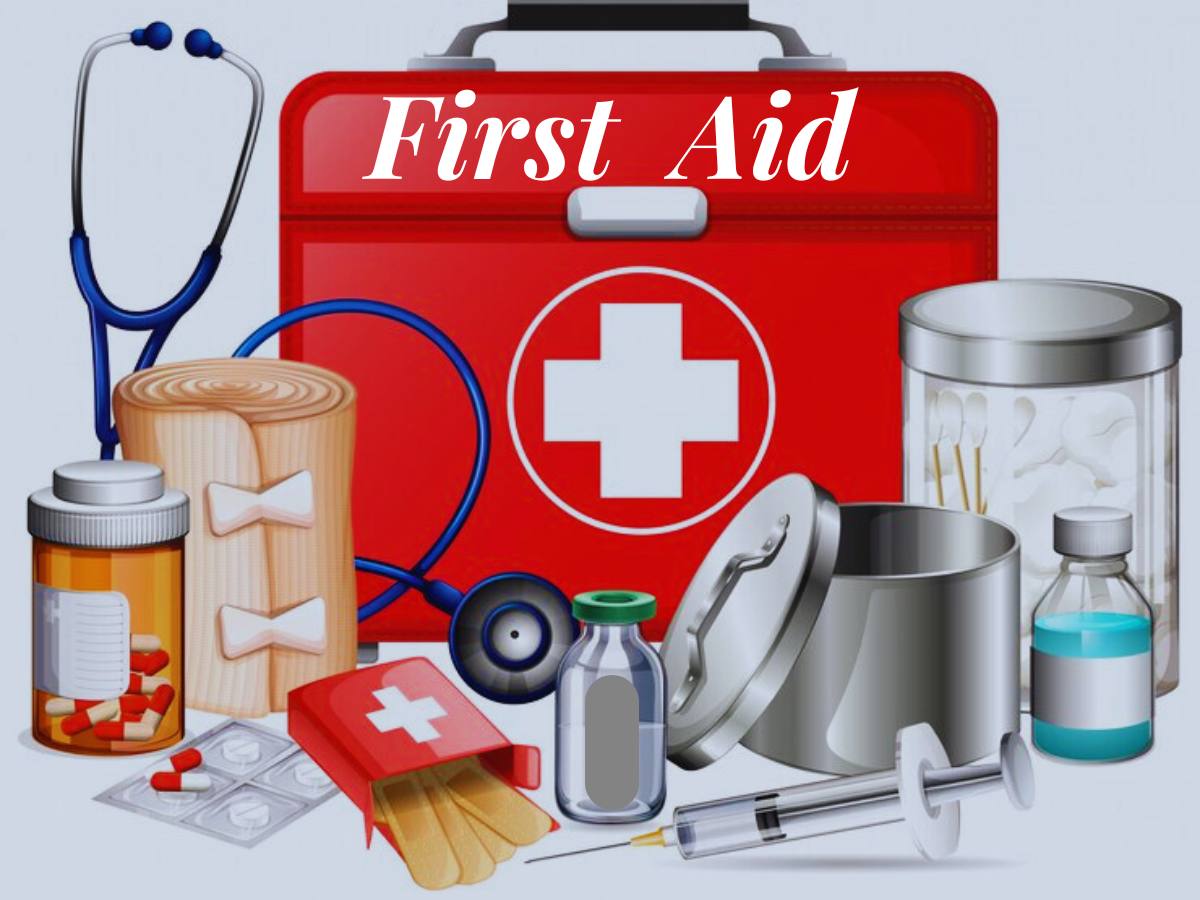First aid is the fast care certain to an injured or ill person before expert medical treatment can be provided. It is an important skill that can save lives reduce recovery time and prevent minor injuries from attractive serious. In this comprehensive guide, we will delve into the basics of first aid and outline the 7 important steps to follow in various emergencies.


The Importance of First Aid
First aid includes many practices and techniques intended to address immediate health concerns in emergencies. It is an important talent for everyone as emergencies can occur anytime anywhere. The essential goals of emergency treatment are to:
- Preserve life.
- Prevent the condition from worsening.
- Promote recovery.
Understanding and applying the right medical aid measures can essentially influence the result of numerous crisis circumstances including mishaps abrupt sicknesses and natural crises.
Basic Principles of First Aid
Before we explore the seven essential steps of first aid it is important to understand the foundational principles that guide first aid procedures:
1. Assess the Situation
Safety is paramount. Before managing first aid ensure that the scene is safe for both the savior and the victim. This includes checking for hazards such as traffic fire or electrical dangers.
2. Stay Calm and Reassure
Panic can worsen the situation. Stay calm and composed to assess and address the emergency effectively. Comfort the victim that help is on the way.
3. Call for Help
In most emergency conditions professional medical assistance is necessary. Dial emergency services immediately providing clear information about the location and nature of the emergency.
4. Do No Harm
Administer first aid with the intention of not causing additional harm. Avoid moving the victim unnecessarily and use appropriate techniques for the specific injury or condition.
5. Follow the ABCs of First Aid
The ABCs of emergency treatment address the following needs: Aviation route Breathing and Dissemination. Guarantee the casualties’ aviation route is clear they are breathing and there is satisfactory dissemination.
The 7 Essential Steps of First Aid


Step 1: Assess the Condition and Ensure Safety
The first and most critical step in any first aid condition is to evaluate the environment. Ensure the region is alright for yourself and the harmed individual. Look for potential hazards such as traffic fire or falling debris. Only proceed with first aid if the area is secure.
If the circumstance is hazardous and you can’t eliminate the peril do not move toward the person in question. Call crisis administrations and sit tight for experts who have the vital gear and preparing to deal with the circumstance.
Step 2: Call for Emergency Help
Making a call for emergency assistance is the next step after making sure the scene is safe. In numerous places calling 911 will put you in contact with emergency personnel. Give the dispatcher as much information as possible including the victims’ condition the location the type of crisis including any potential dangers to their safety.
As you wait for emergency personnel your job is to administer the first assistance required to stabilize the wounded. But since seeking expert medical attention can often be essential making contact for aid is a vital step that ought not to be postponed.
Step 3: Check for Responsiveness
After calling for help, assess the victims responsiveness. Gently shake the person and ask loudly, Are you okay? If the person responds you can proceed with further assessment and necessary first aid measures. If there is no response you need to check their airway breathing and circulation immediately.
Step 4: Perform CPR and AED if Necessary
On the off chance that the casualty is inert and not breathing or not breathing typically (heaving) start CPR (Cardiopulmonary Revival) right away. CPR is a lifesaving method that consolidates chest compressions and salvages breaths to keep up with flow and breathing until proficient assistance shows up.
Performing CPR:
- Chest Compressions: Put the impact point of one hand on the focal point of the casualties’ chest with the other hand on top. Push down firmly holding back nothing of around 2 inches (5 cm) and a pace of 100-120 compressions each moment.
- Salvage Breaths: After 30 compressions give 2 salvage breaths. Slant the casualties’ heads back somewhat to open the aviation route squeeze the nose shut and cover their mouth with yours making a seal. Blow into their mouth until you see the chest rise.
- Proceed with CPR: Shift back and forth between 30 compressions and 2 salvage breaths until crisis staff show up or the individual beginnings relaxing.
Utilizing an AED (Robotized Outer Defibrillator):
An AED is a convenient gadget that can break down the heart’s cadence and convey an electric shock to assist with reestablishing an ordinary mood in unexpected heart failure. Numerous public spots have AEDs accessible and they are intended to be easy to use.
- Turn on the AED: Follow the voice prompts given by the gadget.
- Attach Pads: Place the adhesive pads on the victim’s bare chest as indicated.
- Analyze Rhythm: Allow the AED to analyze the heart rhythm. Ensure no one is touching the victim during this time.
- Deliver Shock if Advised: If the AED recommends a shock ensure everyone is clear of the victim and press the shock button.
- Resume CPR: Continue CPR until the AED reanalyzes or emergency help arrives.
Step 5: Address Severe Bleeding
Serious draining can immediately become hazardous. It is vital to control draining quickly to forestall shock and different inconveniences.
Steps to Control Bleeding:
- Apply Direct Pressure: Utilize a perfect fabric or wrap to apply firm tension straightforwardly to the injury. Keep up with tension until the draining stops.
- Raise the Injury: Assuming conceivable hoist the harmed appendage over the level of the heart to decrease the blood stream to the area.
- Utilize a Tourniquet if Vital: On the off chance that the draining is wild with direct tension and the injury is on an appendage a tourniquet might be fundamental. Place the tourniquet 2-3 creeps over the injury and fix until draining stops. Note the time the tourniquet was applied and illuminate the clinical workforce upon their appearance.
- Monitor for Shock: Keep the victim warm and monitor for signs of shock such as pale or clammy skin rapid breathing or confusion.
Step 6: Treat for Shock


Shock is an unsafe condition that occurs when the body is not getting sufficient blood flow. It can result from severe injuries bleeding burns or other trauma.
Signs of Shock:
- Pale, cool, and clammy skin
- Rapid breathing and heart rate
- Weakness or fatigue
- Confusion or anxiety
- Nausea or vomiting
Steps to Treat for Shock:
- Lay the Person Down: Have the victim lie flat on their back. On the off chance that there are no head neck or back wounds, you can raise their legs around 12 crawls to further develop the bloodstream into imperative organs.
- Keep Warm: Use covers or dresses to keep the casualty warm and agreeable.
- Screen Fundamental Signs: Constantly screen the casualty’s breathing and heartbeat until crisis help shows up.
- Console the Person in question: Give quiet and positive consolation to keep the casualty loose.
Step 7: Give Fitting Consideration for Specific Injuries
Emergency treatment covers a large number of wounds and ailments. Here are some common conditions and the suitable first aid measures for each:
Burns
- Severely charred areas: Cool the ignite with running water for something like 10 minutes. Apply a sterile dressing or clean material. Try not to involve ice as it can create additional harm.
- Severe singeing: Cool the consume and cover with a non-stick sterile dressing. Try not to break rankles.
- Severely charred areas: Do not take off consumed clothing or apply water. Cover the region with a clean non-stick dressing and look for crisis clinical assistance right away.
Breaks and Injuries
- Immobilize the Injury: Utilize a support or sling to immobilize the impacted region. Try not to move the harmed appendage.
- Apply Ice: Use ice packs to reduce swelling and pain but do not apply ice straight to the skin.
- Seek Medical Attention: Professional appraisal and treatment are essential for fractures and severe sprains.
Choking
- Encourage Coughing: If the person is coughing inspire them to continue as it may dislodge the object.
- Perform Heimlich Maneuver: If the person cannot cough speak or breathe achieve abdominal thrusts to expel the object. Stand behind the victim place your hands overhead their navel and give quick inward and upward thrusts.
- Administer Back Blows: For infants alternative between five back blows and five trunk thrusts.
Poisoning
- Identify the Poison: Try to control what the person has consumed inhaled or been exposed to.
- Call Poison Control: Contact your local poison control center or emergency services for exact instructions.
- Do Not Induce Vomiting: Unless trained by a medical professional do not induce vomiting.
Hypothermia
- Move to a Warm Environment: Get the being inside or to a sheltered area.
- Remove Wet Clothing: Replace with dry warm clothing or blankets.
- Gradually Warm the Person: Use warm blankets and body heat. Avoid straight heat sources like hot water or heating pads.
Conclusion
First aid is a crucial expertise that can have an effect on life and passing in a crisis. By getting it and applying the essential standards and steps illustrated in this guide you can give compelling and quick attention in different circumstances. Recall the critical objectives of emergency treatment are to save life keep the condition from declining, and advance recuperation.
While this guide gives a far-reaching outline consider taking an ensured emergency treatment course to upgrade your insight and abilities further.
FAQ’s
Ques -1 What are the five rules of first aid?
- Assess the Situation
- Call for Help
- Do No Harm
- Check for Responsiveness
- Provide Appropriate Care
Join Our Facebook Page Now:
You may also link this post:





